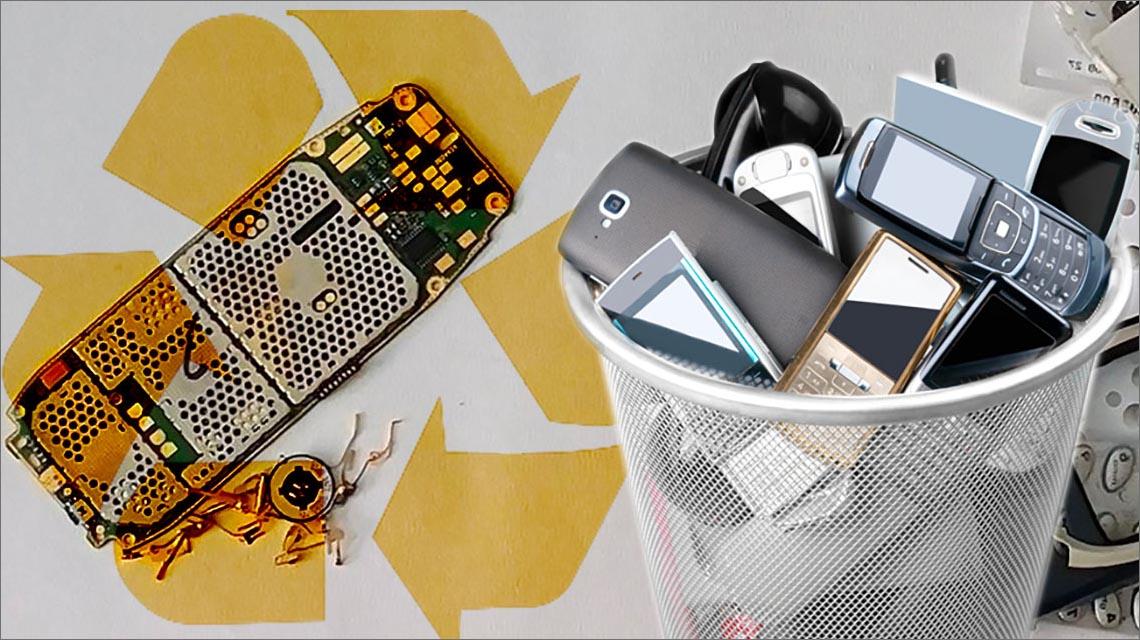Italian National Agency for New Technologies, Energy and Sustainable Economic Development

Environment: ENEA technology makes discarded cell phones a valuable source of raw materials for new electronic devices
Developing a new process to recover high-value materials and metals from end-of-life mobile phones with a view to circular economy. This is the goal of the project PORTENT[1], co-funded by the Lazio Region with approximately 140 thousand euro through the European Regional Development Fund and coordinated by the ENEA Laboratory 'Technologies for Reuse, Recycling, Recovery and Valorisation of Waste and Materials'. “The amount of waste from electrical and electronic equipment is growing, mainly due to increasingly shorter times of technical obsolescence. This phenomenon could generate serious management problems related to the presence of metals and harmful substances that pose a real risk to human health and the environment ", explained Danilo Fontana, ENEA researcher and coordinator of the project PORTENT.
2020 showed a significant increase in the collection rate of this type of waste: nationally it exceeded 78 thousand tons (+ 7.68% compared to 2019), while in the Lazio Region the share was about 6 thousand tons with a significant leap forward compared to the 2.4 thousand tons of the previous year [2]. Among these wastes, mobile phones are certainly the electronic devices of greatest interest due to the precious and strategic materials they contain.
“Italian entrepreneurs dealing with recycling do not go beyond the simpler but less profitable treatment and recycling phases, such as shredding and separation of plastics and metals, leaving foreign operators the advantage of recovering the “noble” part of the waste, in particular electronic cards rich in metals such as gold, silver, palladium and copper. Exploiting our skills in this sector, in synergy with Sapienza University of Rome, we want to develop an innovative process for the recovery of materials from discarded cell phones to complete the supply chain, which currently ends at the foreign trade of stocks of separate materials ”, Fontana pointed out.
One ton of electronic cards from end-of-life telephones contains on average 276 g of gold, 345 g of silver, 132 kg of copper[3]; If we take into account other components such as magnets and integrated antennas, the list extends with rare earths (such as neodymium, praseodymium and dysprosium) which can reach 2.7 kg per tonne of smartphone[4].
“Thanks to current technologies it is possible to recycle over 96% of these electronic devices, recovering significant amounts of precious metals with high degrees of purity, so avoiding the depletion of natural resources and the need for supply of some of these critical raw materials present mainly in politically unstable countries", Fontana said.
For the project PORTENT, ENEA will employ hydrometallurgical technologies (alternative to pyrometallurgy) because of their low energy consumption (operating at room temperature), reduced emissions, modularity of the systems and flexibility of use. All features that allow easy up-scaling and industrial reproducibility, without neglecting social acceptability at the local level. And there’s more. "Hydrometallurgy is a technique particularly suitable for the selective separation and purification of elements with high added value even in matrices with low concentrations of metals.
While pyrometallurgy, in order to be sustainable, must process huge quantities of material often not available in a single nation but present in geographic areas very distant from the plants ”, Fontana continued.
Once the project is concluded, the outcomes will be transferred to enterprises both for the technological innovation of industrial processes and the development of new professional skills. "The objective, in fact, is to contribute to local and national economy growth and the reduction of the environmental impact of this type of waste which, by recoverying the materials contained therein, will become a source of secondary raw materials for new technological products ”, Fontana concluded.
Note
[1] recuPerO mateRiali da TelEfoni a fiNe viTa
[2] Rapporto Annuale 2020 Raee Italia
[3] D. Fontana et al. (2019). Waste Management 99, 22-30
[4] Bookhagen et al. (2020). Resources Policy 68
